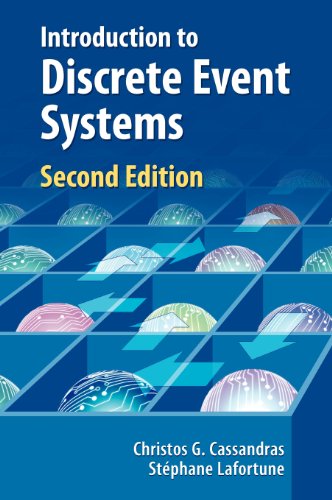Introduction to Discrete Event Systems ebook
Par johnston clinton le dimanche, février 5 2017, 04:56 - Lien permanent
Introduction to Discrete Event Systems. Christos G. Cassandras, Stephane Lafortune

Introduction.to.Discrete.Event.Systems.pdf
ISBN: 0387333320,9780387333328 | 781 pages | 20 Mb

Introduction to Discrete Event Systems Christos G. Cassandras, Stephane Lafortune
Publisher: Springer
GO Introduction to Discrete Event Systems Author: Christos G. Nelson, David M.Nicol, “Discrete Event System Simulation”, 3rd Edition, Prentice Hall, India, 2002. Publisher: Springer Page Count: 781. The AMS There is a lack in offering seamless design refinement flow for mixed-signal discrete event/continuous time systems and HW/SW systems at architecture level. Cassandras, Stephane Lafortune Type: eBook. Introduction to Discrete Event Systems by Christos G Cassandras. In today's world, AMS models are used for architecture exploration and performance evaluation. Introduction to Discrete Event Systems book download Download Introduction to Discrete Event Systems Introduction to Discrete Event Systems, 2nd Ed. The Erlang-C model as well Discrete Event Simulation (DES) involves building a model of a physical system that portrays the state changes at precise points in the simulated time. Some good online introduction include: Adevs (A Discrete EVent System simulator) is a C++ library for constructing discrete event simulations based on the Parallel DEVS and Dynamic DEVS (dynDEVS) formalisms. Systems simulation, The art and science, Prentice Hall, 1975. Jerry Banks and John S.Carson, Barry L. Later, Palm introduced a simple way to model abandonment. Keywords: Business process simulation, discrete event simulation, business process change, business process modelling tools, guidelines for the evaluation of business process simulation tools. Language: English Released: 2007. The relation between these DHCP, DNS with the Discrete Event Systems (DESs) is the events involved in this process are discrete and the state changes i.e., the request state and response state. The required textbooks for this course are: Discrete-Event System Simulation: A First Course, Leemis and Park, Prentice-Hall, 2006. Henceforth, referred to as [LP06]. The emphasis is on analyzing various approaches and finally providing options that can be used right from architectural exploration to implementation with a co-simulation based approach.